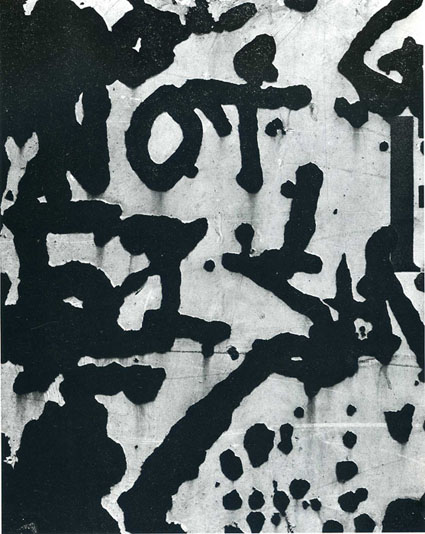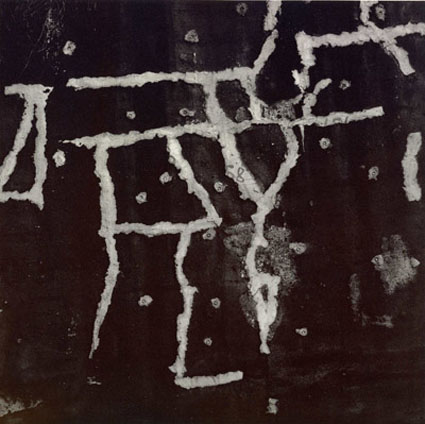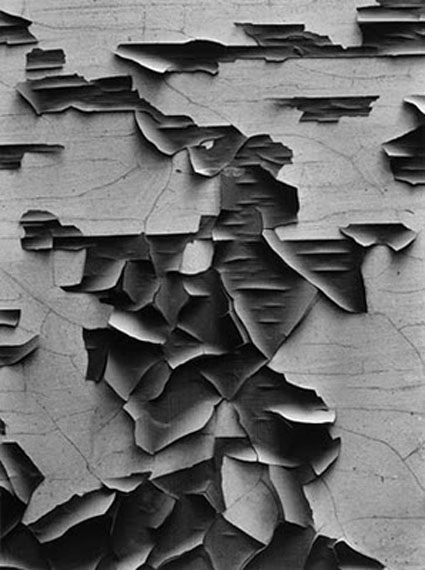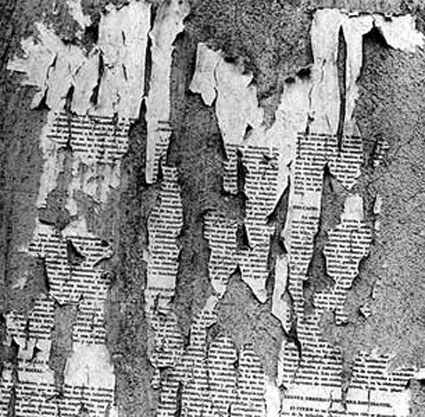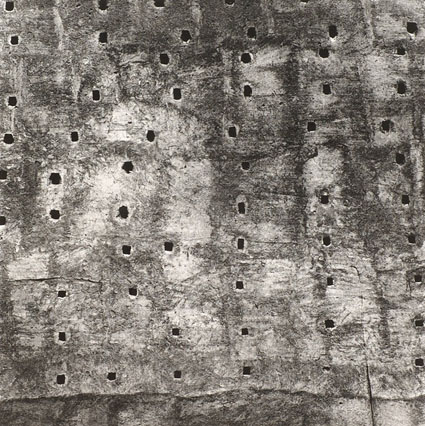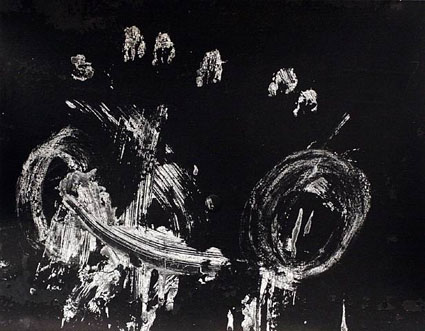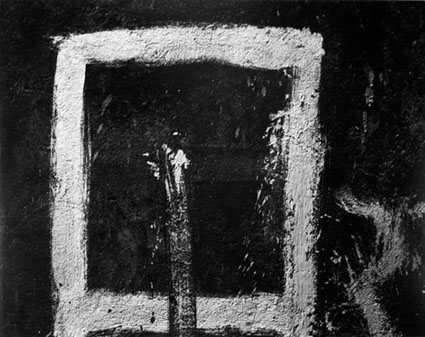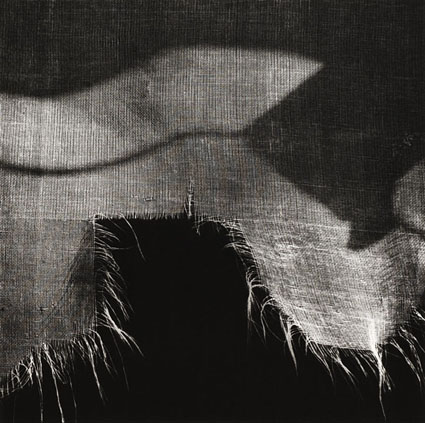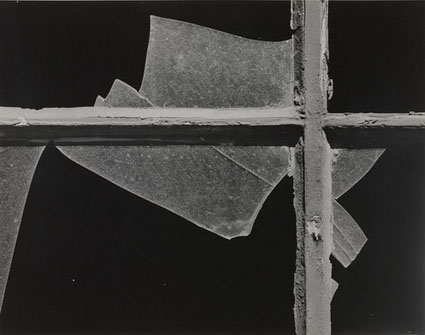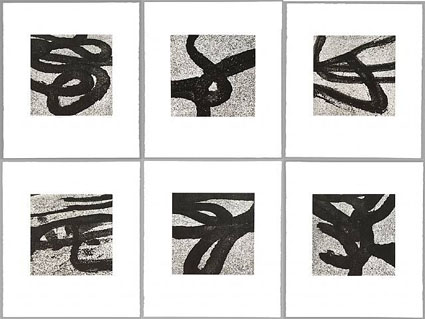
If he wasn’t the first, Aaron Siskind was certainly the preeminent abstract expressionist photographer. The abstract details he presents as new hyper-flat surfaces stand independent of their original subjects.
Abstraction in non-representational art celebrated in the modernist movement early 20th century has taken many forms; Kandinsky’s expressionism, Picasso’s Cubism, Malevich’s a Constructivism, Stella’s Minimalism, Vasarely’s Op Art, etc) While photography quickly became the gold-standard of realism and consequently it took it longer than painting to embrace abstraction. (It’s arguable that the invention of photography forced painting to embrace abstraction.) Siskind’s images helped establish photography’s credibility as abstract art.
But what kind of abstraction is Siskind’s abstraction? And what is the function of abstraction in Siskind’s work? Coming late to the game his work aggregates many previous sensibilities and ideas.
Like so many modernists he emphasized that what he made was not a representation of something else but “the thing itself” – an idea that has metamorphosed chimera-like since the Greeks and been repurposed by nonrepresentational artists and realists alike. But, while most modernists took pains to avoid including elements that suggest figurative images, Siskind’s images are peppered with them and because of their photographic nature they always reference something else, no matter how covertly. Like Jackson Pollock, Siskind prized directness and immediacy of expression but the personal authenticity derived from this becomes ironic given the essentially appropriative nature of photography. Like Franz Kline, Siskind’s images are riddled with poetic gestures, but none of the gestures in his images are made by hand or by him. Like Wassily Kandinsky, Siskind drew an analogy between his images and musical scores or performances, never mind that he worked without color or purely with tone.
Siskind’s abstraction defies resolution. Perhaps the most interesting thing about Siskind’s abstraction is that so many forms of abstraction and the ideas behind them coalesce into a single arena, the photographic frame.
Siskind’s work fascinated me instantly because in representing so little it demonstrated so much. A literal recording can be supremely abstract. Sometimes a photograph looks nothing like the thing photographed. To photograph is to transform. (And there are many ways to bring about transformation and many kinds of transformations.) A photograph is never the thing it represents and never just a photograph.
Find out more about my influences here.
